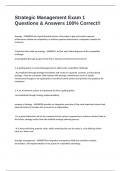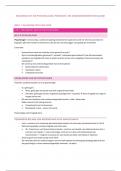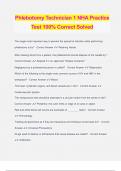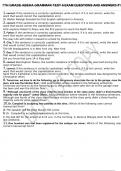Examen
Strategic Management Exam 1 Questions & Answers 100% Correct!!
- Cours
- Établissement
strategy - ANSWERA set of goal-directed actions a firm takes to gain and sustain superior performance relative to competitors; to achieve superior performance, companies compete for resources. 3 elements that make up strategy - ANSWER1. A Clear and Critical diagnosis of the competitive challenge...
[Montrer plus]







